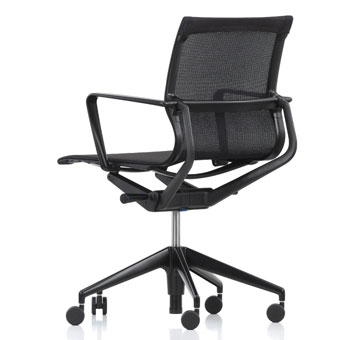
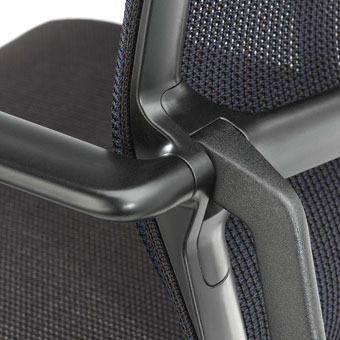
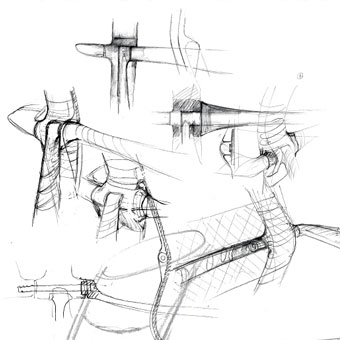

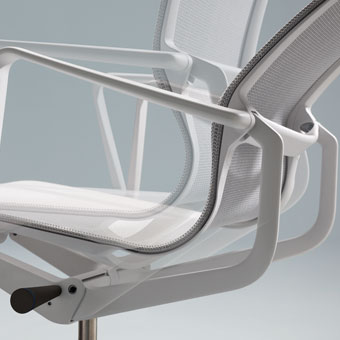
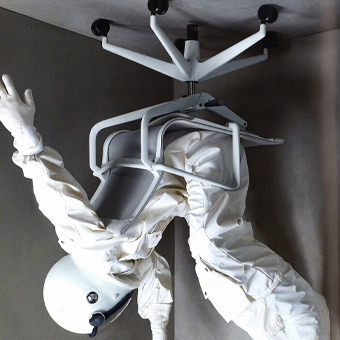
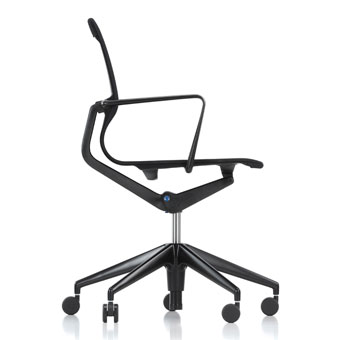

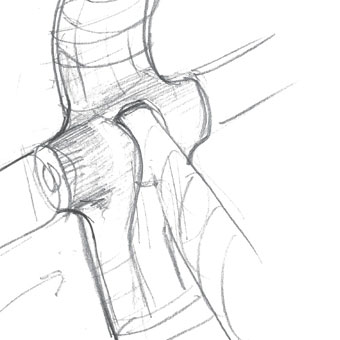
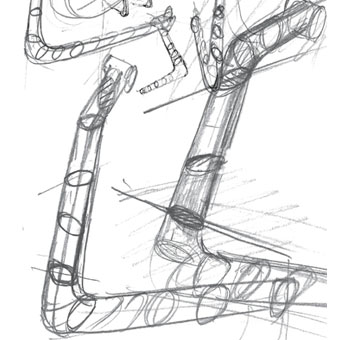
Physix
- Year: 2012
- Designer: Alberto Meda
- Company: Vitra
With its combination of a flexible plastic frame, elastic knitted fabric and an integrated synchronizing mechanism, Physix, explores the possibilities of dynamic sitting.
In the past century, the development of a new typology of chairs in which seat and back are not separated, but rather form a continuum, reached its first peak with the 1927 MR 20/3 cantilever chair by Mies van der Rohe. Chairs with one-piece shells made from a variety of materials such as moulded plywood, sheet metal or plastic followed over the years, designed by, among others, Rietveld, Aalto and Coray. But it was Charles and Ray Eames and their Aluminium Chair, which appeared in 1956, that marked the first use of fabric, stretched under tension between two parallel aluminium profiles, to provide a mix of elasticity and support in the seat and back.
Like the Aluminium Chair, the construction of Physix is based on the idea of creating a continuous textile seat and back, held between two parallel profiles. But Physix also takes this development one significant step further,using an interplay of three factors to create a new, dynamic sitting experience: a flexible frame construction, an elastic knitted fabric cover and a stabilizing mechanical unit.The organic side profiles, which are made of polyamide, can be deformed in a way that mimics a flexible hinge, following the sitter as he leans back. The elasticity of the slender profiles is controlled by dividing their cross-section into rigid and flexible zones. The flat armrests of the chair can be deformed in a similar manner.
The single stretch of fabric that is held between the parallel profiles forms the supportive continuum of seat and back.The multithreaded knitted fabric is highly stable and its more compact zones provide necessary support in the lumbar area of the back. At the same time, the fabric’s elasticity allows for a three-dimensional deformation of the shell. Thus, the chair’s frame and seat follow the sitter’s movement smoothly in all directions – not only back and forth and sideways, but even diagonally, as the sitter leans back to look over his or her shoulder.
With its semi-transparent weave, the knitted fabric also contributes to the visual lightness of the chair and allows for nuanced colour combinations. An additional counterbalancing elements enable Physix to attain precise, synchronized movements between an upright and a backwards-leaning sitting position. A pair of aluminium brackets attached to the back of the chair transfer the movement of the frame to this spring mechanism, which is contained in a small box underneath the seat. As a result, the seat always follows the sitter back to his upright position.
For detailed info please visit: http://www.vitra.com/fr-be/product/physix
On April 2016 in Milano at Palazzo Litta the Physix Story show describes the non-linear "path " of the project that proceeds for attempts at a solution.
